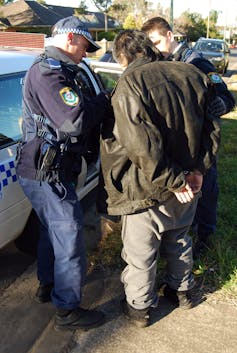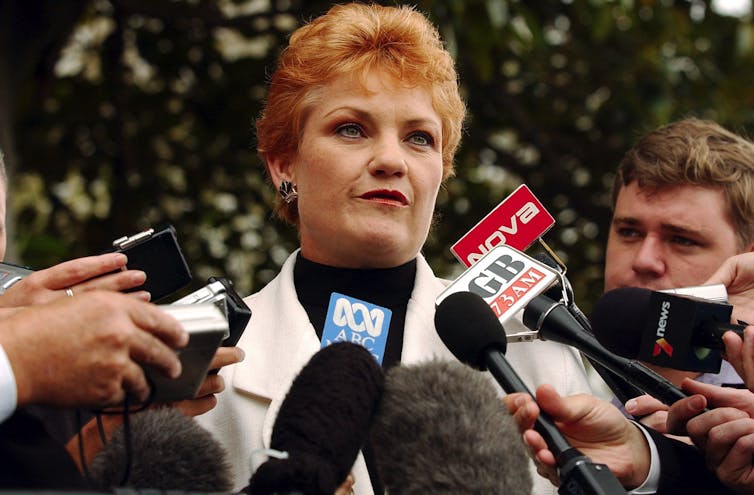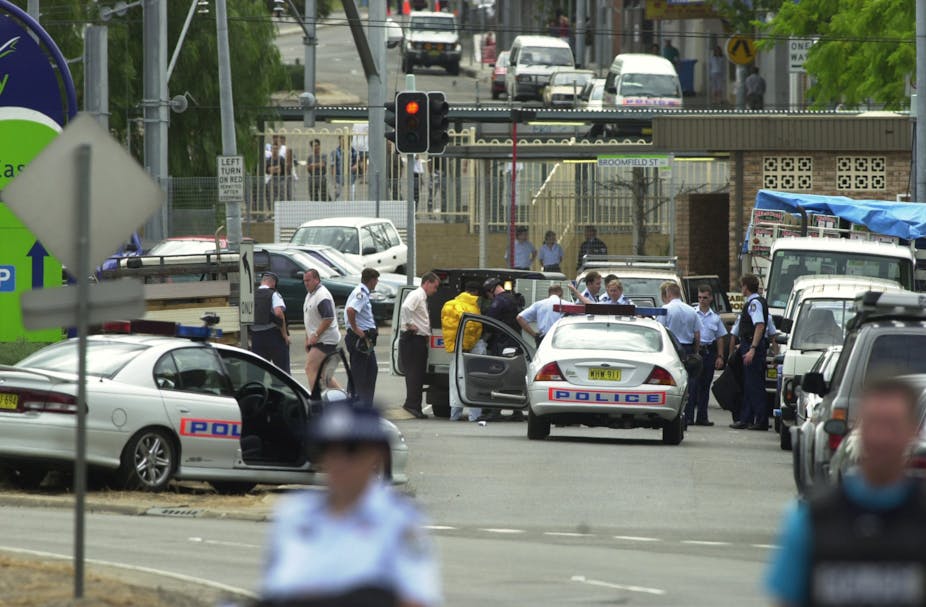In a world of 24/7 news cycles and prejudice masquerading as insight, it is often very difficult to communicate the deeper analyses based on social science research.
Surprising then that a program based on such research and offering a complex analysis of the Vietnamese challenge to Australia’s multicultural vision should become one of the highest rating shows ever on SBS, reaching over 1 million viewers in its first episode (in both English and Vietnamese sub-titled versions).
“Once Upon A Time in Cabramatta”, the current three part SBS documentary on Vietnamese settlement and survival, has built its master narrative on an academic paper originally prepared in 2002.
A new Cabramatta
The early part of last decade was a time of tumultuous change among the Vietnamese, with the first major successful challenge to their reputation for drug-related violent crime.
A NSW Upper House inquiry in 2001, argued for by local councillor Thang Ngo and promoted by Liberal Party defector Helen Sham-Ho MLC, essentially presented the vision of the local population for a suburb that was properly policed, in which their safety was assured, and in which the common civilities of life could flourish. For more than a decade none of this had been possible. The situation had been amplified by two deaths.
The first was the 1994 assassination of local MP John Newman (local councilor Phuong Ngo has been convicted for organizing the crime); the second involved the 1995 murder of 21 year old Tri Minh Tran, the energetic and entrepreneurial leader of the 5T gang, with a consequential anarchic amplification of violence and disorder. At the time some suggestion was made that Phuong Ngo tried to have Tran murder Newman, but he refused.
The Underbelly-style “hook” for the series should not divert our attention from the longer term trajectory of the Vietnamese community in the area. The end of White Australia by government edict in the early 1970s just preceded (and made possible) the Vietnamese arrival and the formulation of multiculturalism as a rubric for public policy in relation to immigrant settlement.
From White Australia to multiculturalism
For a century Australia’s conversation about Asians had been saturated with racial superiority and racist hostility; the first Federation Parliament passed the Immigration Restriction Act in 1901 as one of its first moves to “imagine the nation”. The slow dissolution of the White perspective remained unfinished business in the Australian heartland when Labor under Whitlam in 1973 said race was no longer to be a factor in selecting immigrants or accepting refugees.
What we then have is a testing ground for theories of immigrant settlement, theories of multiculturalism as social policy, and theories of the politics of ethnicity in settler societies. While the Commonwealth under Fraser elected to take the refugees, and played a key role in negotiating the later orderly departure program with Vietnam and other regional nations, especially Malaysia, it was the states that would need to provide the services and facilities, and local government that would need to manage the “quintessential collision” of cultures and people.
In Victoria there was a succession of governments that championed multiculturalism, invested in services, and saw their roles as critically important in building social cohesion; there was also the perceived value of immigrant voters in key seats for both parties, and allegations of branch stacking were widespread, especially for the ALP.

Nor were government actions always sufficient or effective, especially after Geoffrey Blainey’s 1984 speech on Asian immigration seemed to license the reinvigoration of a White Australia discourse. In NSW the long-running ALP machine led by Bob Carr was antipathetic to Asian settlement, was only minimally prepared to resource multicultural programs, and operated locally through branch-stacking, corruption and nepotism.
In a sense Cabramatta sits at the intersection of all the policy challenges that could be massed in one area, and exemplifies some of Blainey’s 1984 concerns. It was a working class area with a long-established immigrant population, mainly from Southern and Eastern Europe. Yugoslav and Russian communities were well-entrenched: Newman, a black-belt karate instructor, came from a Yugoslav post-war family, and served for many years on the Fairfield council. He was also an ex-Federated Clerks Union official; the union was one of the most right wing and conservative of the ALP’s key supporters.
The stability of ALP control was shaken by the emergence of new political players among the Asians, with new branch stacking starting to put pressure on local networks. As a “safe seat” there was little government interest in rocking the boat.
Theory and practice
In the 1920s Robert Park developed a typology of relations between new immigrants and established residents in the exploding metropolis of Chicago. Contact, conflict, accommodation and assimilation marked the successive stages of interaction, all driven by a Darwinian survival imperative in his ecological model of urban social life.
A generation later Robert Merton developed ideas about deviance through the application of the concept of “anomie”, where cultural values and social opportunities do not mesh. For the Vietnamese in Cabramatta, the social structure for mobility was closed by racism and corruption, overlaid by economic exploitation and family fragmentation.
As the series shows some of the young people growing up in the area in the 1980s were cut off from their parents (their language skills in Vietnamese were poor, while few of the parents spoke English), there were few if any community services or supports, and the street skills of wartime Saigon were the most useful capacities for survival in the new land.
Survival on the streets of Cabramatta
Competition meant muscling into a space either controlled by others, or taking advantage of an ecological niche to maximize returns on their skills. The heroin trade had flourished (ironically) during the Vietnam War, when US servicemen on leave served as an easy entry point for the drug, and allowed the establishment of the connections to Bangkok from where the drug could be cheaply sourced.

The police force was unable to protect the local population from its own predators, while leaders like Phuong Ngo were in effective public denial. The series tracks the development of the criminal networks and their capacity to elude the police and recruit ever increasing numbers of dealers and users, ultimately serving a thousand or more users a day who arrived by train at Cabramatta station, leaving behind bodies of those who succumbed to the drug.
By the late 1990s not only Hanson would have felt multiculturalism, if it meant letting in Asians such as those, was a fearful mistake. Yet at the local level the feeling was intense but the reverse: multiculturalism hadn’t so much “failed Australia” as failed the communities which sought its protection. As Howard wound back the funding for multicultural services, never very great, and coasted along with the Hansonite rhetoric which inflamed what he condoned, key Liberal Party members resigned – some to become independents such as Helen Sham Ho, others to create the new Unity Party.
The coming of change
The struggle by Thang Ngo, Helen Sham–Ho and others to force the oldest parliamentary chamber in the country to hear the voices of the traumatised Vietnamese should stand as one of the great political campaigns of modern Australia. Even as that campaign reached its peak and the Committee was due to report, government policy, after years of rhetoric, began to deliver.
Special legislation allowed the police to break up the drug houses, barricaded apartments used to sell and use drugs. The arrest rate rose dramatically, while sadly the death rate removed many of the dealers.
Attempts by Thang Ngo to get then Fairfield mayor Chris Bowen (today’s Immigration Minister) to back supervised injecting rooms with associated treatment and support services, were rebuffed without consideration. However a whole-of-government committee driven out of the Premier’s special projects unit tried to ensure that everyone was working in the same direction.
I love pho
By 2002, Generation 1.5 and Generation 2 were surfacing through the maelstrom of the previous 25 years. In an exhibition promoted by the extraordinarily brave community arts worker Cuong Le, called “I love Pho”, local young people (in 2012 well established in careers and professions) portrayed their struggles, triumphs and despairs through a myriad of art works and stories.
So what are the lessons? Leadership in both the immigrant community and in the local and wider society remains crucial. For the Vietnamese most of the leaders were still embroiled in émigré politics, seeing their time in Australia as a temporary sojourn before returning to a non-Communist Vietnam. Australia was too hard for most of them, and the chaos around them was not something they could easily manage.
Some may even have had a hand in opening up the illicit trade routes that fed the drug market, or helped develop the extortion and protection rackets, or grown wealthy from the widespread exploitation of Vietnamese women in the clothing outwork sector.
In recent years governments have placed a lot more emphasis on leadership development of young people from immigrant communities, while building detailed networks of community surveillance and consultation.
Confronting structural racism

A firm societal commitment to anti-racism is important, with no license being given to public figures who condone or support racism. In this we have been less successful, refusing as a nation to adopt human rights legislation.
If we do adopt anti-racism as a policy principle, then we need to be vigilant about internal exploitation within ethnic communities in the name of culture, and ongoing hostility between communities fed by racism. The new anti-racism partnerships, though desperately under-resourced, may tackle some of these questions. While there have been some significant public cultural heroes of Vietnamese origin (Luke Nguyen being the latest), they do not appear among the mainstream representations of Australian life.
This structural racism persists in the Australian media, despite many attempts by artists and actors to gain a foothold. Most appearances are stereotyped and occasional, rather than rounded and continuing.
The power of democracy
However the most important lesson must surely be that the history of a suburb like Cabramatta presents a test of Australian democracy and its capacity to fully represent the interests and serve the needs of all its citizens. The worst part of the Cabramatta story is where democracy failed the local people, the best where they used it to rise against the tide.
I am not suggesting that somehow Cabramatta or the Vietnamese have become pure; crime still exists, Vietnamese Australians are still members of gangs that roam with criminal intent, as are people of many other ethnic backgrounds and those with long Australian pedigrees.
However the capacity of people to now believe that they have a stake in Australia and that the wider society has a stake in their well-being, marks a truly dramatic turn-around. or more recent communities and those that are still ravaged by crime and violence, the sense of reciprocal recognition and obligation may still be the challenge unmet.

